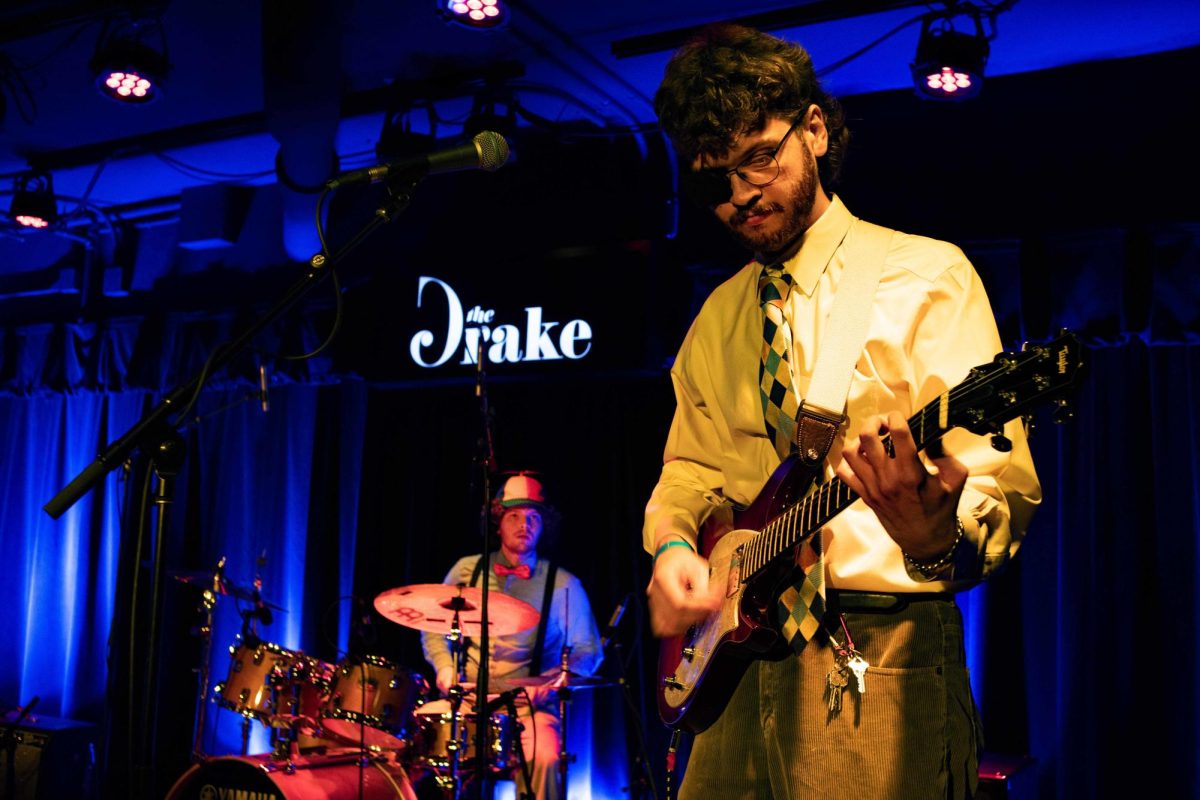
That question provokes a common reaction when the musical term makes its way into conversation. Those reasonably tuned in to what’s going on in music nowadays may have noticed bands — Neon Indian, Washed Out, Toro y Moi — labeled “chillwave” on Last.fm or other such listening sites, but may not be sure of the particulars. How exactly did chillwave come to be? Which elements are most essential to this new and puzzling genre? Who coined the term “chillwave?”
Students are constantly encouraged to use scholarly sources. What better source, then, to elucidate the nebulous being of chillwave than the Oxford English Dictionary? While this well-reputed catalogue has often been useful for the well-read and wordsmiths in a pinch, its electronic version contains not a single entry for “chillwave.”
But even this lack of information speaks volumes. It suggests that chillwave is not yet widely acceptable as a universal term. It has hardly pervaded the four corners of the earth to the degree of such phenomena as, for example, “Harry Potter” (let it be noted that the definition of “muggle” is readily accessible in the OED).
Perhaps the reason for the confusion surrounding chillwave and its absence from the dictionary is that no one can seem to agree on a single definition for it. Descriptions vary considerably, ranging from “mellow” to “distorted.” The fact that these descriptions are also ambiguous does not help matters, but instead sends curious listeners into endless loops of looking up unfamiliar terms.
Commonalities that span most chillwave songs include simple melodies and a heavy reliance on synthesizers. Because these characteristics are not definitive enough on their own, chillwave tunes also embrace what is known as a filtered vocal, giving the impression that the singer’s voice is passing through some sort of transparent barrier before it reaches the listener’s ear. When combined, these traits help to give chillwave its mellow quality.
Since it has only developed in recent years, a distinctive feature of chillwave is that its foundation and community are almost entirely contained within the Internet. It even received its name, as a joke, from the blog “Hipster Runoff.”
The chillwave movement began in 2009, when a few solo artists simply recorded their music and posted it online for the world to hear. Their music had similar qualities, although there was very little real-life interaction between the musicians themselves. This may irk musicians who hold more traditional viewpoints that emphasize the importance of human interaction in creating cohesive music.
In fact, lengthy arguments on various indie rock blogs indicate that chillwave is surprisingly controversial as a music category for multiple reasons. Of course it’s true that music, the aural medium of the artistic world, is inherently going to be pleasing to some listeners and less than tolerable to others. In-your-face music, like explicit rap or the erotic undertones in a power pop song, are only possibly controversial. But what could be so provocative about a variety of music as nonthreatening and soft-spoken as chillwave?
It has already been referred to here as a genre, but some sources argue that chillwave doesn’t deserve even that distinction. They claim that chillwave purports to be something new, while in reality it’s simply a distorted, dreamy version of dance pop. They also insist that because the differences between chillwave groups are just as numerous as their similarities, no real genre can be constructed. Apparently, there exists an entire faction just waiting for chillwave to fall off the radar, back into the non-being it was prior to the summer of 2009.
There’s also something to be said for chillwave’s often nostalgic quality. This arises from its penchant for sampling techniques, motifs or even pieces of songs from past eras. In a way, it’s expected that new music will intermingle and borrow from the most successful elements of earlier music. Sticking with what works is a natural part of the process of moving forward. Chillwave is simply the newest example of this tendency.
Whether it perseveres or not, there’s no denying that a chillwave movement has begun. And like any creative movement, chillwave exists not merely as a point of contention, but as concrete evidence of evolution and progress. In a decade, we may already be looking back on the chillwave phenomenon, tracing its influence to whichever musical undertaking is on the rise then.
Lindsey Tulloch can be reached at [email protected].






